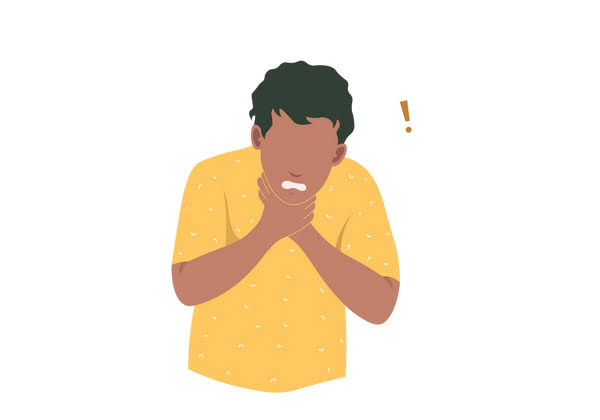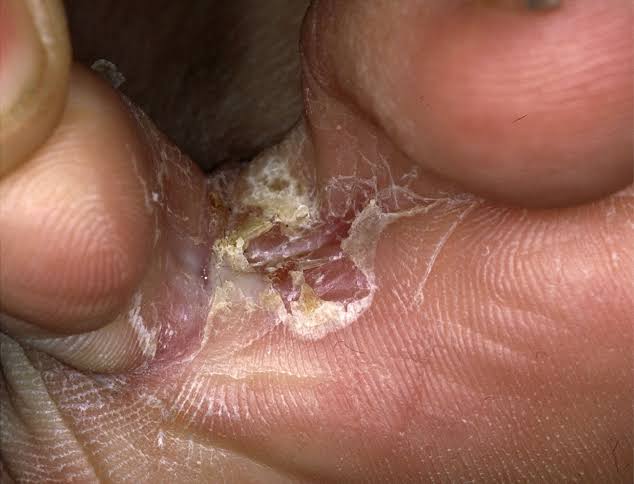Emergency Series, Episode 2: Choking First Aid and Prevention

It’s 7:32 am and you’re running late for school. You and your friend, Nkechi have just joined the crowd in front of Prestige counter, hoping the servers play nice today and give you value for your money in a timely fashion. Thankfully, it seems Lady Luck is on your side as the queue moves quickly and after a few minutes, you both get your meals. You settle down at the last vacant table to scarf down your hot food before you’re irredeemably late for the ward round, when all of a sudden Nkechi starts coughing. You absentmindedly offer her water, thinking nothing of it, but the coughing persists. It gets louder, and you finally look up from your plate to see panic written all over her face. Fear runs you through like a lance, as she grips her throat, gasping for air. Your spoon clatters to the floor as you bolt to your feet, and several onlookers begin to take notice. You’re frozen in place, watching your best friend choke in front of you, your mind blank save one question: what do you do?
Sadly, this scene sums up the reaction of the majority of Nigerians. It is tragic as choking is a common cause of mortality in children and adults alike, worldwide. In a study conducted in the UAE, 54.3% of participants reported having witnessed someone over the age of 18 choking, while a very small comparative percentage knew the appropriate management. Whether you’ve ever found yourself in this position or not, this article is for you. Let’s walk through the do’s and don’ts of choking first aid 101.
The Heimlich Maneuver
Named after Dr Henry Heimlich, the Heimlich manoeuvre is a lifesaving technique used to deliver a person who is choking on an object or has a blockage of their airway. Adapted since the 1970s, this technique has proven to be instrumental in emergency first aid and is responsible for the preservation of thousands of lives.
Here’s how to perform the Heimlich manoeuvre on someone who is choking involves four simple steps:
- Stand behind the person and wrap your arms around their waist.
- Make a fist with one hand and place it just above the person’s navel (belly button) and below the ribcage.
- Grasp your fist with your other hand and pull inward and upward with a quick, firm motion into the diaphragm.
- Repeat this motion until the object is dislodged from the person’s airway.


You can also self-administer the Maneuver if you happen to be the one choking by:
- Finding a chair or other sturdy object to lean over.
- Wrapping your arms around the object and pulling inward and upward with a quick, firm motion.
- Repeating until the object in your airway is dislodged.

Speed and precision are of the essence when performing the Heimlich maneuver, as a person’s airway may become completely blocked otherwise. If attempts to dislodge the object prove unsuccessful or the person becomes unconscious, begins to turn blue, or shows other signs of distress, refer to a nearby emergency centre immediately.
It’s also pertinent to remember that the Heimlich maneuver is only used for choking on a solid or semi-solid object, not for other types of choking, such as choking on liquids or having a severe allergic reaction (anaphylactic reaction). The Maneuver is also only to be used on conscious persons. If it fails, the next course of action is to perform cardiopulmonary resuscitation (CPR) until medical assistance arrives.
An alternative option that can be employed in place of the Heimlich Maneuver is giving back blows. Here’s how to do this:
- Stand to the side and just behind a choking adult (for a child, kneel behind).
- Place your arm across the person’s chest to support the body.
- Bending the person over at the waist to face the ground.
- Striking five separate times between the person’s shoulder blades with the heel of your hand.

In some instances of choking, coughing may not be heard as the windpipe may be completely blocked. Other signs to look out for include: one or both hands clutched to the throat, a facial expression of panic, shock or confusion, strained or noisy breathing, squeaky sounds when trying to breathe, inability to talk darkening of skin, lips and nails and loss of consciousness.
Prevention is better than cure
Ultimately, preventing choking is the best way to escape its complications. Choking can be prevented by ensuring these safety measures:
- Cutting food into small pieces.
- Chewing food thoroughly
- Laughing and talking while eating should be avoided
- Younger children should be prevented from playing with small easily ingestible objects
- Supervising meal times with children
In conclusion, choking is a serious medical emergency that requires swift and precise attention. There is a very high chance that someone (maybe even you) will choke in your presence at some point. By making a basic effort to understand the causes and signs of choking, you can intervene and be the barrier between life and death.
Oreoluwa Opeolu
Prevalence of Choking and Awareness about Its Proper Management among the Residents of the United Arab Emirates: Cross-sectional Study. Universal Journal of Public Health 11(4): 377-385, 2023 http://www.hrpub.org DOI: 10.13189/ujph.2023.110401
https://www.mayoclinic.org/first-aid/first-aid-choking/basics/art-2005663
https://www.hopkinsmedicine.org/health/wellness-and-prevention/choking-first-aid



